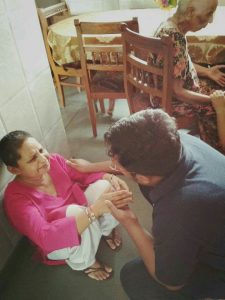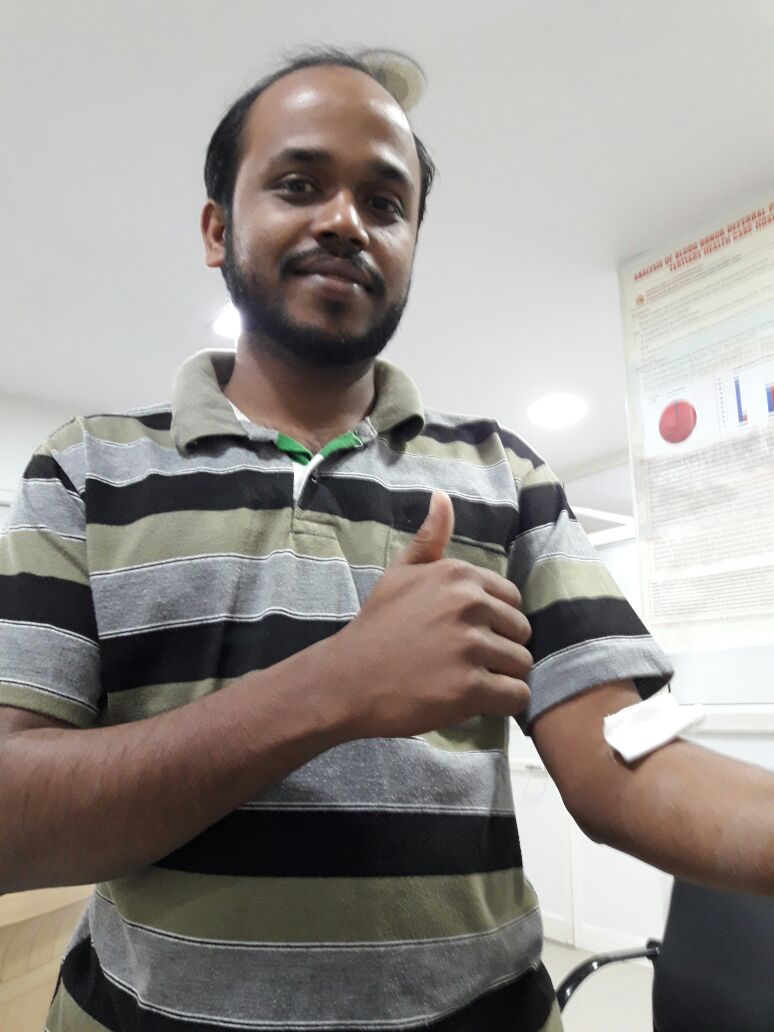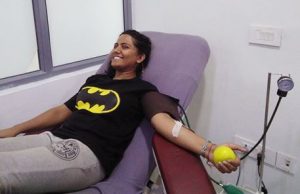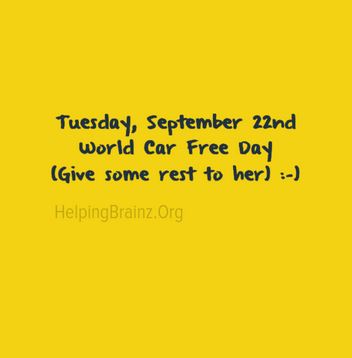Home » Bloggerati (Page 3)
Category Archives: Bloggerati
Priceless Moments…
Certain pics might need a caption, a story or an insight attached… While certain ones just carry emotions enough to trigger the viewer’s soul!

12th August 2017.
PC: Shipra Mathur
Here,
the gratitude filled woman’s eyes,
the warmth provided by our Helping Brain Yedhukrishnan..,
the pain of destitution in her tears,
the folded hands of her despair,
the comforting touch of our man..
the feelings radiating of about having someone around…
These are enough for people like us who haven’t been there yet got moved n felt content for the act..
As Master Cards ad say 😉
… Some moments r priceless.. N for others v have Mastercard (funds in our HB language 😉
Spread smiles and Gather smiles for yourselves.
Have a happy helping day..
🙂
Let’s empower with Helping Brainz
We’re a weekend volunteer group based out of Delhi operating in 6 other cities of India, potentially working for nation development. We encompass this by dedicating our Saturday’s for Women and Child Empowerment, Elderly Care, Village Development, PEACE, Blood Donations, Health Information Literacy Drives and Educational Counselling Sessions.
Helpng Brainz believes in sharing their knowledge for community development, as knowledge increases on sharing. Today after completing 260 Saturdays of Community Service, our outreach has increased to 8000+ people, with the help of 88 community development events, 500+ volunteers, 40+ coremembers, 30+ partners and 18+ interns. Majority of our teammates are Corporate professionals, and students who wholeheartedly dedicate their weekends for community service. Our works has been appreciated by UNESCO and various Indian organizations and we very much work on the path shown by Dr. APJ Abdul Kalam.
You can develop yourself and the nation, in your own way, that is where Helping Brainz is gonna support you and that is how we work 🙂
To be a part as a team member (changemaker) or a volunteer (friend) logon to www.helpingbrainz.org/gi or email to either Ainee.Tanwir@HelpingBrainz.Org -or Vivek.Vaid@HelpingBrainz.Org or call 9711189900 (between 7:00pm – 9:00pm).
Be the change you want to see. See you on the road towards development ?
Blood Donors- We connect, you save lives!
13.03.2017
Holi
When the world was “celebrating a colourful Holi” and “worrying about platelet donations”, a young gentleman “Vineeth P. Sethu” from west Delhi thought of donating his platelets for a patient admitted in Action Balaji Hospital, Paschim Vihar. Though a regular donor, however someone who donated his platelets for the first time – didn’t step back and a waste a single minute when he was asked to do so. When asked how he felt, he just smiled and said ‘he enjoyed the music in the lab’ and post his donation he asked the Lab Assistant, whether he could donate his blood/platelets in next 72 hours. We salute bravehearts like Vineeth who is indeed an inspiration. Vineeth is interested to join the Helping Brainz’s blood donation team to help the needy.
11.03.2017
Akanksha Singh Mattoo donated blood to a Cancer patient on 11th March, 2017. At the outset, she was quite afraid as this was her first time, but yet again like always, she soon realised that its nothing but just 20 mins that the entire process takes, and the satisfaction hence achieved is unparalleled! She met the patient’s wife and both were overwhelmed of each other’s gesture. What people like Akanksha do, empowers women! Also, thanks to Sonal Singh for proactively being ready to donate. Thanks to both of you, for being awesome!
#WomensDay never ends, it was yesterday, it is today and it will forever be!
10.02.2017
Ankita Srivastava, on the 10th of February donated a unit of blood to a mother, a wife and a grandmother admitted in ICU, Max Hospital. The recipient was critical and donors were being searched for, by HelpingBrainz.
Ankita, who had never earlier donated blood, volunteered to do this time and albeit is a warrior was however a bit nervous (still cheerful) that day.
Once she was under the process of bleeding, she never knew when did it all finish and never felt a tad pain. She was very happy and excited to have donated blood and wondered all the way back to her office as to why is blood donation not able to suffice the blood requirements when it just needs 20 minutes of a donor’s time and no cons at all.
We salute you for the courage that you showed and hope people learn from you.
10 Ways to Take Charge of Your Heart Health
Use the following tips – 10 Ways to Take Charge of Your Heart Health – to embark on a heart-healthy lifestyle to fight heart disease.
- Schedule a Yearly Checkup : Your heart is in your hands. Each year on your birthday, schedule a checkup to have your blood pressure, cholesterol and glucose levels checked, and ask your doctor to help you reach or maintain a healthy weight. Be sure to follow your healthcare professional’s recommendations, including taking prescribed medications as directed.
- Get Physical : Step, march or jog in place for at least 15 minutes a day while watching your favorite TV shows. Increase your activity by five minutes each week until you’re getting a minimum of 30 minutes most days of the week. If exercise and diet do not get you to your goal, ask your doctor about adding medication.
- Drink More Water : Take a water bottle with you wherever you go. It’ll keep you hydrated and the bottle’s weight will strengthen your arms.
- Eat Healthy : Keep packages of unhealthy food hidden. Put raw veggies and fruits in front in the refrigerator and healthy snacks in the front of the pantry, so that’s what you see first. If you grab healthy foods for a minimum of 21 times, healthy choices will become a habit.
- Control Cholesterol : Eating foods high in saturated fat, trans fat or cholesterol can lead to high blood cholesterol. To help keep your cholesterol levels down, eat foods low in saturated fat and trans fat, such as lean chicken or turkey (roasted or baked, with skin removed), fruits and veggies, low-fat or fat-free dairy products and whole grains.
- Cut Down on Salt : To help lower high blood pressure, watch your salt intake. It may be disguised in food labels as sodium alginate, sodium sulfite, sodium caseinate, disodium phosphate, sodium benzoate, sodium hydroxide, monosodium glutamate (MSG), or sodium citrate.
- Quit Smoking
Try this four-step way to kick your habit:
- On Day 1, cut the number of cigarettes you smoke by half
- On Day 3, cut the number of cigarettes you smoke in half again
- And on Day 5, cut your smoking in half again
- On your Quit Day… quit!
- Maintain a Healthy Weight : Excess weight increases your risk of heart disease, stroke and diabetes. To achieve steady, painless weight loss, take it easy. Each day, if you eat 200-300 calories less than you would normally consume, and exercise at least 30 minutes on most or all days of the week, you’ll get closer to your goal and be able to achieve weight loss that’s steady and painless.
- Stay Positive : If you get off your exercise schedule, have a cigarette, or eat a fattening meal, immediately get back on track toward re-establishing a healthy lifestyle.
- Give Yourself Credit : To maintain momentum with exercising, losing weight, or quitting smoking, keep track of your achievements and reward yourself by doing something you enjoy.
You’re never too young— or too old — to take care of your heart.
Preventing heart disease (and all cardiovascular diseases) means making smart choices now that will pay off the rest of your life.
Lack of exercise, a poor diet and other unhealthy habits can take their toll over the years. Anyone at any age can benefit from simple steps to keep their heart healthy during each decade of life. Here’s how:
o matter what your age, everyone can benefit from a healthy diet and adequate physical activity.
• Choose a healthy eating plan. The food you eat can decrease your risk of heart disease and stroke.
Choose foods low in saturated fat, trans fat, and sodium. As part of a healthy diet, eat plenty of fruits and vegetables, fiber-rich whole grains, fish (preferably oily fish-at least twice per week), nuts, legumes and seeds and try eating some meals without meat. Select lower fat dairy products and poultry (skinless). Limit sugar-sweetened beverages and red meat. If you choose to eat meat, select the leanest cuts available.
• Be physically active. You can slowly work up to at least 2½ hours (150 minutes) of moderate-intensity aerobic physical activity (e.g., brisk walking) every week or 1 hour and 15 minutes (75 minutes) of vigorous intensity aerobic physical activity (e.g., jogging, running) or a combination of both every week.
Additionally, on 2 or more days a week you need muscle-strengthening activities that work all major muscle groups (legs, hips, back, abdomen, chest shoulders, and arms). Children should get at least 60 minutes of activity every day.
• It’s never too earl or too later to learn the warning signs of a heart attack and stroke. Not everyone experiences sudden numbness with a stroke or severe chest pain with a heart attack. And heart attack symptoms in women can be different than men.
—————————————————
In Your 20s
Getting smart about your heart early on puts you far ahead of the curve. The things you do — and don’t — are a tell-tale sign of how long and how well you’re going to live, said Richard Stein, M.D. “There’s no one I know who said: ‘I felt better being sedentary. I felt better eating a terrible diet,’” said Stein, a cardiologist and professor of medicine at New York University School of Medicine. “All these things actually make you feel better while they help you.”
• Find a doctor and have regular wellness exams. Healthy people need doctors, too. Establishing a relationship with a physician means you can start heart-health screenings now. Talk to your doctor about your diet, lifestyle and checking your blood pressure, cholesterol, heart rate, blood sugar and body mass index. You may also need your blood sugar checked if you are pregnant, overweight or have diabetes. Knowing where your numbers stand early makes it easier to spot a possible change in the future.
• Be physically active. It’s a lot easier to be active and stay active if you start at a young age. “If you’re accustomed to physical activity, you’ll sustain it,” Dr. Stein said. Keep your workout routine interesting by mixing it up and finding new motivators.
• Don’t smoke and avoid secondhand smoke. If you picked up smoking as a teen, it’s time to quit smoking. Even exposure to secondhand smoke poses a serious health hazard. Nonsmokers are up to 30 percent more likely to develop heart disease or lung cancer from secondhand smoke exposure at home or work, according to a U.S. Surgeon General report.
————————————————-
In Your 30s
Juggling family and career leaves many adults with little time to worry about their hearts. Here are some ways to balance all three.
• Make heart-healthy living a family affair. Create and sustain heart-healthy habits in your kids and you’ll reap the benefits, too. Spend less time on the couch and more time on the move. Explore a nearby park on foot or bike. Shoot some hoops or walk the dog.
Plant a vegetable and fruit garden together in the yard, and invite your kids into the kitchen to help cook.
• Know your family history. Shake down your family tree to learn about heart health. Having a relative with heart disease increases your risk, and more so if the relative is a parent or sibling.
That means you need to focus on risk factors you can control by maintaining a healthy weight, exercising regularly, not smoking and eating right.
Also, keep your doctor informed about any heart problems you learn about in your family.
• Tame your stress. Long-term stress causes an increase in heart rate and blood pressure that may damage the artery walls.
Learning stress management techniques not only benefits your body, but also your quality of life. Try deep breathing exercises and find time each day to do something you enjoy.
Giving back through volunteering also does wonders for knocking out stress.
——————————————-
In Your 40s
If heart health hasn’t been a priority, don’t worry. Healthy choices you make now can strengthen your heart for the long haul. Understand why you need to make a lifestyle change and have the confidence to make it. Then, tackle them one at a time. “Each success makes you more confident to take on the next one,” said Stein, an American Heart Association volunteer.
• Watch your weight. You may notice your metabolism slowing down in your 40s. But you can avoid weight gain by following a heart-healthy diet and getting plenty of exercise. The trick is to find a workout routine you enjoy.
If you need motivation to get moving, find a workout buddy.
• Have your blood sugar level checked. In addition to blood pressure checks and other heart-health screenings, you should have a fasting blood glucose test by the time you’re 45.
This first test serves as a baseline for future tests, which you should have every three years. Testing may be done earlier or more often if you are overweight, diabetic or at risk for becoming diabetic.
• Don’t brush off snoring. Listen to your sleeping partner’s complaints about your snoring.
One in five adults has at least mild sleep apnea, a condition that causes pauses in breathing during sleep. If not properly treated, sleep apnea can contribute to high blood pressure, heart disease and stroke.
————————————————–
In Your 50s
Unlike the emergence of wrinkles and gray hair, what you can’t see as you get older is the impact aging has on your heart. So starting in the 50s, you need to take extra steps.
• Eat a healthy diet. It’s easy to slip into some unhealthy eating habits, so refresh your eating habits by eating plenty of fruits and vegetables, fiber-rich whole grains, fish (preferably oily fish-at least twice per week), nuts, legumes and seeds and try eating some meals without meat.
• Learn the warning signs of a heart attack and stroke. Now is the time to get savvy about symptoms.
Not everyone experiences sudden numbness with a stroke or severe chest pain with a heart attack. Andheart attack symptoms in women can be different than men.
• Follow your treatment plan. By now, you may have been diagnosed with high blood pressure, high cholesterol, diabetes or other conditions that increase your risk for heart disease or stroke.
Lower your risk by following your prescribed treatment plan, including medications and lifestyle and diet changes.
——————————————————
In Your 60s+
With age comes an increased risk for heart disease. Your blood pressure, cholesterol and other heart-related numbers tend to rise. Watching your numbers closely and managing any health problems that arise — along with the requisite healthy eating and exercise — can help you live longer and better.
• Have an ankle-brachial index test. Starting in your 60s, it’s a good idea to get an ankle-brachial index test as part of a physical exam.
The test assesses the pulses in the feet to help diagnose peripheral artery disease (PAD), a lesser-known cardiovascular disease in which plaque builds up in the leg arteries.
• Watch your weight. Your body needs fewer calories as you get older. Excess weight causes your heart to work harder and increases the risk for heart disease, high blood pressure, diabetes and high cholesterol. Exercising regularly and eating smaller portions of nutrient-rich foods may help you maintain a healthy weight.
• Learn the warning signs of a heart attack and stroke. Heart attack symptoms in women can be different than men. Knowing when you’re having a heart attack or stroke means you’re more likely to get immediate help. Quick treatment can save your life and prevent serious disability.
Thanks to American Heart Association for the same 🙂
World Car Free Day – Sept 22nd
Car Free Day is Tuesday, September 22, 2015. It’s is a worldwide event that encourages greener methods of travel; meaning ways to get around other than driving alone by car.
Commuter Connections hosts Car Free Day to bring awareness to the benefits of travel options such as transit, bicycling and walking; and also telework for people who can work from home. Carpooling and vanpooling count too! We call that “car-lite” since they are both lighter on the wallet and the environment than driving alone in a car.
Reduce your Carbon Footprint
Using more sustainable ways to get around helps reduce greenhouse gas emissions and traffic congestion. The more people who travel using bicycles, buses, trains, carpools and vanpools, the less pollutants are released into the atmosphere.
#Teamwalk #Teambus #Teamrail #Teambike #Teampool #Teamtelework#TeamHelpingBrainz 🙂
NGO vs Non-Profit Organizations
Many people do not understand the principles of, and the differences between, NGO and Non-profit organizations, even though they are well-known terms in the 21st century. First of all, to clarify, NGO stands for a non-governmental organization, and a non-profit organization can also be referred to as a NPO.
Non-governmental organizations are created by legal persons who are not part of the government. Although NGO funds are mostly raised by the government, they maintain a non-governmental position, and eliminate the need for a government council. This type of organization is also known as a civil society organization. There are forty thousand international NGOs in the world, with the most organizations found in India.
In 1945, after the establishment of the United Nations Organization, the non-governmental organizations became extremely popular. Although, before this time, there were other organizations, such as the famous Rotary International, that began its operation in 1904. By the end of the year 1914, there were one thousand and eighty three NGOs in existence. International NGOs played a vital role in the anti-slavery movement, as well as in the movement for women’s suffrage. The official definition of international NGOs was defined on February 27, 1950, by the resolution 288 (X) of the ECOSOC.
Various types of Non-governmental organizations include:
BINGO ‘“ Big International NGO
CSO ‘“ Civil Society Organization
DONGO ‘“ Donor Organized NGO
ENGO ‘“ Environmental NGO
GONGO ‘“ Government-operated NGOs
INGO ‘“ International NGO
QUANGO – Quasi-autonomous NGO
TANGO ‘“ Technical Assistance NGO
GSO ‘“ Grassroots Support Organization
MANGO – Market Advocacy Organization
On the other hand, the non-profit organization does not divide its extra funds between its shareholders, or owners, but uses them for the organization’s purposes. Examples of these organizations are public arts organizations, trade unions and charitable organizations. They offer services and programs through federal, local or state entities. Non-profit organizations hire management personnel, and aim to raise substantial funds. These organizations are service organizations or charities that are established for co-operative, trust or purely informal reasons. NPOs are also known as endowments, or foundations that have huge stock funds. A supporting organization is similar to a non-profit organization, and also operates as a foundation, but they have more complicated structures.
Non-profit organizations do have legal responsibilities, and these may include:
Supervision and management provisions
Economic activity
Accountability and Auditing provisions
Provisions for the dissolution of the entity
Tax status of corporate and private donors
Representation
Tax status of the foundation
Provision for the amendment of the statutes or articles of incorporation
To summarize, the differences between a non-profit organization and NGOs are:
1.The NGO is a non-governmental organization. Its funds are raised by the government, but it maintains a non-governmental position, with no need for a government council. They are also known as civil society organizations.
2.A non-profit organization uses its extra funds for the purpose of the organization, rather than dividing it between the shareholders and the owners of the organization. Examples of NPOs are public arts organizations, trade unions and charitable organizations.
Posted from WordPress for Android
10 Legal Rights every women should know
Knowing the times that we are in, we give you, yet again, an overview of some important legal rights for women that every one must be aware of.
1 Free legal aid
Exercise your right to free legal aid. Often, women go to the police station unaccompanied by a lawyer to get their statement recorded, and they stand the risk of being misquoted or their statement being tampered with. The police may also treat the entire episode lightly and not lodge an FIR. So, it is necessary to have a lawyer with you while you lodge the FIR. “According to a Delhi High Court ruling, whenever a rape is reported, the SHO has to bring this to the notice of the Delhi Legal Services Authority. The legal body then arranges for a lawyer for the victim,” says Saumya Bhaumik, women rights lawyer.
2 Right to privacy while recording statement
Under section 164 of the Criminal Procedure Code, a woman who has been raped can record her statement before the district magistrate when the case is under trial, and no one else needs to be present. Alternatively, she can record the statement with only one police officer and woman constable in a convenient place that is not crowded and does not provide any possibility of the statement being overheard by a fourth person. The cops have to, by law, upkeep the woman’s right to privacy. It’s important for the person to feel comfortable and not be under any kind of stress while narrating the incident.
3 Time doesn’t matter
The police cannot refuse to register an FIR even if a considerable period of time has elapsed since the incident of rape or molestation took place. If the police tells you that they can’t lodge your FIR since you didn’t report it earlier, do not concede. “Rape is a horrifying incident for any woman, so it’s natural for her to go into shock and not want to report it immediately. She may also fear for her safety and the reputation and dignity of her family. For this reason, the Supreme Court has ruled that the police must register an FIR even if there has been a gap between the report and the occurrence of the incident,” says Tariq Abeed, advocate, Supreme Court.
4 Email to the rescue
According to the guidelines issued by the Delhi Police, a woman has the privilege of lodging a complaint via email or registered post. If, for some reason, a woman can’t go to the police station, she can send a written complaint through an email or registered post addressed to a senior police officer of the level of Deputy Commissioner or Commissioner of Police. The officer then directs the SHO of the police station, of the area where the incident occurred, to conduct proper verification of the complainant and lodge an FIR. The police can then come over to the residence of the victim to take her statement.
5 Cops can’t say no
Arape victim can register her police complaint from any police station under the Zero FIR ruling by Supreme Court. “Sometimes, the police station under which the incident occurs refuses to register the victim’s complaint in order to keep clear of responsibility, and tries sending the victim to another police station. In such cases, she has the right to lodge an FIR at any police station in the city under the Zero FIR ruling. The senior officer will then direct the SHO of the concerned police station to lodge the FIR,” says Abeed. This is a Supreme Court ruling that not many women are aware of, so don’t let the SHO of a police station send you away saying it “doesn’t come under his area”.
6 No arrests after sunset
According to a Supreme Court ruling, a woman cannot be arrested after sunset and before sunrise. There are many cases of women being harassed by the police at wee hours, but all this can be avoided if you exercise the right of being present in the police station only during daytime. “Even if there is a woman constable accompanying the officers, the police can’t arrest a woman at night. In case the woman has committed a serious crime, the police has to get it in writing from the magistrate explaining why the arrest is necessary during the night,” says Bhaumik.
7 You can’t be called to the police station
Women cannot be called to the police station for interrogation under Section 160 of the Criminal Procedure Code. This law provides Indian women the right of not being physically present at the police station for interrogation. “The police can interrogate a woman at her residence in the presence of a woman constable and family members or friends,” says Abeed. So, the next time you’re called to the police station for queries or interrogation when you have faced any kind of harassment, quote this guideline of the Supreme Court to exercise your right and remind the cops about it.
8 Protect your identity
Under no circumstances can the identity of a rape victim be revealed. Neither the police nor media can make known the name of the victim in public. Section 228-A of the Indian Penal Code makes the disclosure of a victim’s identity a punishable offense. Printing or publishing the name or any matter which may make known the identity of a woman against whom an offense has been committed is punishable. This is done to prevent social victimisation or ostracism of the victim of a sexual offense. Even while a judgment is in progress at the high court or a lower court, the name of the victim is not indicated, she is only described as ‘victim’ in the judgment.
9 The doctor can’t decide
Acase of rape can’t be dismissed even if the doctor says rape had not taken place. A victim of rape needs to be medically examined as per Section 164 A of the Criminal Procedure Code, and only the report can act as proof. “A woman has the right to have a copy of the medical report from the doctor. Rape is crime and not a medical condition. It is a legal term and not a diagnosis to be made by the medical officer treating the victim. The only statement that can be made by the medical officer is that there is evidence of recent sexual activity. Whether the rape has occurred or not is a legal conclusion and the doctor can’t decide on this,” explains Bhaumik.
10 Employers must protect
It is the duty of every employer to create a Sexual Harassment Complaints Committee within the organisation for redressal of such complaints. According to a guideline issued by the Supreme Court, it is mandatory for all firms, public and private, to set up these committees to resolve matters of sexual harassment. It is also necessary that the committee be headed by a woman and comprise 50% women as members. Also, one of the members should be from a women’s welfare group.
Source : Hindustan Times

























